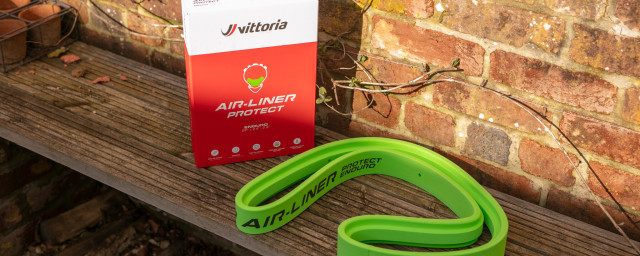The Shimano CUES 6000-series drivetrain represents fabulous value for money matched with great performance. The initial costs are low and the longevity and performance are very good. Most riders will never want more than what the CUES package delivers. If your e-MTB, or regular mountain bike for that matter, needs an upgrade and you’re looking for a well-priced kit that will work well and save you considerable amounts of money and time long-term, this is well worth a look.
- SRAM SX vs NX – budget Eagle drivetrains explained
- SRAM GX Eagle AXS Transmission groupset review
- Shimano is working on a direct mount derailleur
Shimano CUES Link Glide U6000 groupset - Technical details
This first release of Link Glide kit was always a stopgap, as Shimano prepared for a full-range launch of an ecosystem based on this tougher cassette design. And thus, CUES was born.
Around the middle of 2023, the 11-speed wider-range CUES gear suited to e-MTB off-road use started to arrive, and finally, Shimano sent a full CUES-branded groupset - drivetrain and brakes - for us to review. Each CUES component deserves its own standalone review, so I’ll summarise.
Pictured here is the drivetrain (which I’ll cover), plus the Shimano U8020 four-piston brake system which will follow as a separate review. The core of the Link Glide is the CS-LG700-11 11-speed 11-50T cassette (£130). The chain is the CN-LG500 11-speed chain (£30). A note on chains: all Link Glide groupsets, from 9- to 11-speed use 11-speed chains – there’s nothing Link-Glide-specific about the chain. Any 11-speed chain will do but Shimano recommends using one of its own. Confusing but awesome for cross-compatibility and standardisation.
The mech is the RD-U6000-GS (£60) featuring the Shadow+ low side profile to avoid rock strikes, plus a switchable clutch to aid chain retention and make wheel removal easier. The maximum cog size is 50T. The RD-U6000 is also compatible with the 10-speed CUES cassette and shifter.
The shifter is the SL-U6000-11R (£40) and comes with a gear display. The trigger action for downshifting (ie into a harder gear) is two-way – your thumb or index finger. The U6000 shifter is clamp-on only, so there’s no opportunity to fit it to a brake lever for a cleaner look.
So to summarise the drivetrain, that’s only £330 for a complete 11-speed 11-50T e-MTB-ready setup.
Shimano doesn’t sell Bosch-compatible e-bike chainrings, so I fitted a new SRAM X-SYNC 2 steel ring to give the chain a fair shot at longevity.
Shimano CUES Link Glide U6000 groupset - Installation
Installation was easy enough and, as always, Shimano does a great job of making all the tech docs available and easy to follow. The mech comes with two split lengths of SP41 shift outer, which will be almost completely useless for pretty much all e-MTBs as well as most modern analogue bikes, which mostly use a single run of rear shift outer housing. So budget extra for a few metres of SP-41. The shift cable is Shimano’s standard coated style.
Because CUES is designed for e-bike use, the downshifts into a smaller cog/harder gear) are one at a time – so 11 clicks down. Upshifts (getting easier) are a maximum of two at a time, so five presses of the thumb lever to go from the 11 to 50T cogs. Most other e-bike-specific shifters only allow one shift, either way, to prevent damage from multiple-cog shifts under peak load but Link Glide is so durable that Shimano has allowed two upshifts at once.
Shimano CUES Link Glide U6000 groupset - Performance
Thanks to a few lifestyle challenges early in the year I didn't ride as much as I had hoped but managed 500 cold, muddy, steep kilometres on the CUES 6000 drivetrain. During that time the experience of the CUES 6000 kit exactly mirrored what I found on the higher-spec Link Glide XT cassette and mech the year previous – i.e. nothing went wrong and everything just worked.
I love technical climbs more than descents because when you fall off on a climb it doesn’t hurt or cost nearly as much in body parts or trashed gear. Around Dunkeld there are any number of short, angry, rocky pitches to clean, often with protruding roots or rocks that require dainty crank placement immediately followed by a hard stomp on the pedals to keep momentum. Multiple times on each ride I would be in the wrong gear, urgently needing to go a few cogs bigger or smaller to keep the power down or speed up. The CUES 6000 shifting matched with the Link Glide cassette meant random full-power stabs at the thumb lever resulted in a nice clean shift.
I cannot overstate the reassurance that CUES gives a rider on challenging terrain – you can make a complete dog’s breakfast of whatever gear/cadence/power setting you’re in, and CUES will calmly bail you out. Wet, muddy enduro-style e-MTB riding is the ultimate torture test of any kit, so if you’re a more sensible rider in a nicer climate, CUES is capable of whatever you might want to do.
CUES promises improved longevity. As mentioned above I got 1,110km out of an LG500 chain last winter and that was on an already-2,500km-old chainring. At the 500km mark, with a new chainring from the start, the LG500 chain measures an average of just 0.2mm wear over four links using a digital KMC chain checker. The cutoff point for chain wear is 0.8mm, and looking at the graph I'm using to track wear (yes, I know) the wear rate is pretty much consistent. So this points to a predicted chain lifespan of 2,000km – again, ridden in the worst-possible conditions, on a most-powerful-in-class bike and with a minimalist approach to chain maintenance: wipe, drip, wipe, ride.
The CN-LG500 chain is only £30, so even if it lasted only half that distance it still represents great value. I’ve seen chains costing three times that price be destroyed in under a thousand km of winter riding. Once you’ve gone through three chains, it’s probably a good idea to replace the two smallest cogs on the cassette, as they are most prone to wear and skipping under load. The 11T and 13T cogs come as a £20 bundle under the Shimano part number 'Y0RF98020' and should extend the life of your £130 cassette by a considerable amount. You can also buy the 15 and 17T cogs for £8 each. Shimano is delivering long-term reliability, sustainability and lower maintenance costs.
If you ever get caught out with a broken mech or shifter, maybe on holiday or with all the bike shops closed, you can swap another CUES mech or shifter in as the shift ratios are identical. Yes, you may lose an upper or lower gear or be restricted to smaller cogs – but at least you’ll still be riding.
Shimano CUES Link Glide U6000 groupset - Verdict
Overall I’m hugely impressed with the CUES ecosystem for e-MTB use. It’s very well-priced, it’s largely cross-compatible with other CUES components and spares are readily available at good prices.
There is a comparable drivetrain, however. Microshift's Advent X. It is a 10-speed drivetrain that'll set you back a little over £180 but although it's missing one gear, its range is fairly similar, with an, 11-48T gear setup. The shifting is solid, although perhaps a bit clunkier than Shimano's but, for the money, it's an excellent and durable choice. You will have to budget for a chain, however. Here are our thoughts on the regular nine-speed Microshift Advent drivetrain.
But mostly it just works and works flawlessly. For e-bikers in particular that’s huge peace of mind, as other brands or component lines will inevitably suffer faster wear, damage or both.
















Add comment